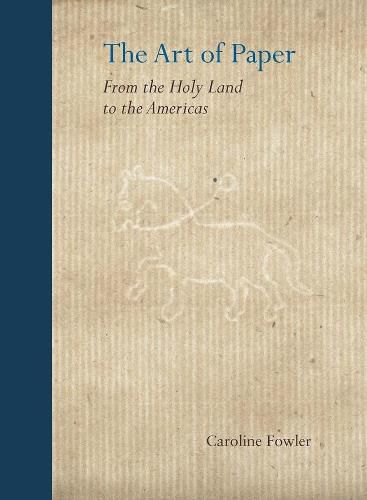Readings Newsletter
Become a Readings Member to make your shopping experience even easier.
Sign in or sign up for free!
You’re not far away from qualifying for FREE standard shipping within Australia
You’ve qualified for FREE standard shipping within Australia
The cart is loading…






The untold story of how paper revolutionized art making during the Renaissance, exploring how it shaped broader concepts of authorship, memory, and the transmission of ideas over the course of three centuries
In the late medieval and Renaissance period, paper transformed society-not only through its role in the invention of print but also in the way it influenced artistic production. The Art of Paper tells the history of this medium in the context of the artist’s workshop from the thirteenth century, when it was imported to Europe from Africa, to the sixteenth century, when European paper was exported to the colonies of New Spain. In this pathbreaking work, Caroline Fowler approaches the topic culturally rather than technically, deftly exploring the way paper shaped concepts of authorship, preservation, and the transmission of ideas during this period. This book both tells a transcultural history of paper from the Cairo Genizah to the Mesoamerican manuscript and examines how paper became Europeanized through the various mechanisms of the watermark, colonization, and the philosophy of John Locke. Ultimately, Fowler demonstrates how paper-as refuse and rags transformed into white surface-informed the works for which it was used, as well as artists’ thinking more broadly, across the early modern world.
$9.00 standard shipping within Australia
FREE standard shipping within Australia for orders over $100.00
Express & International shipping calculated at checkout
The untold story of how paper revolutionized art making during the Renaissance, exploring how it shaped broader concepts of authorship, memory, and the transmission of ideas over the course of three centuries
In the late medieval and Renaissance period, paper transformed society-not only through its role in the invention of print but also in the way it influenced artistic production. The Art of Paper tells the history of this medium in the context of the artist’s workshop from the thirteenth century, when it was imported to Europe from Africa, to the sixteenth century, when European paper was exported to the colonies of New Spain. In this pathbreaking work, Caroline Fowler approaches the topic culturally rather than technically, deftly exploring the way paper shaped concepts of authorship, preservation, and the transmission of ideas during this period. This book both tells a transcultural history of paper from the Cairo Genizah to the Mesoamerican manuscript and examines how paper became Europeanized through the various mechanisms of the watermark, colonization, and the philosophy of John Locke. Ultimately, Fowler demonstrates how paper-as refuse and rags transformed into white surface-informed the works for which it was used, as well as artists’ thinking more broadly, across the early modern world.